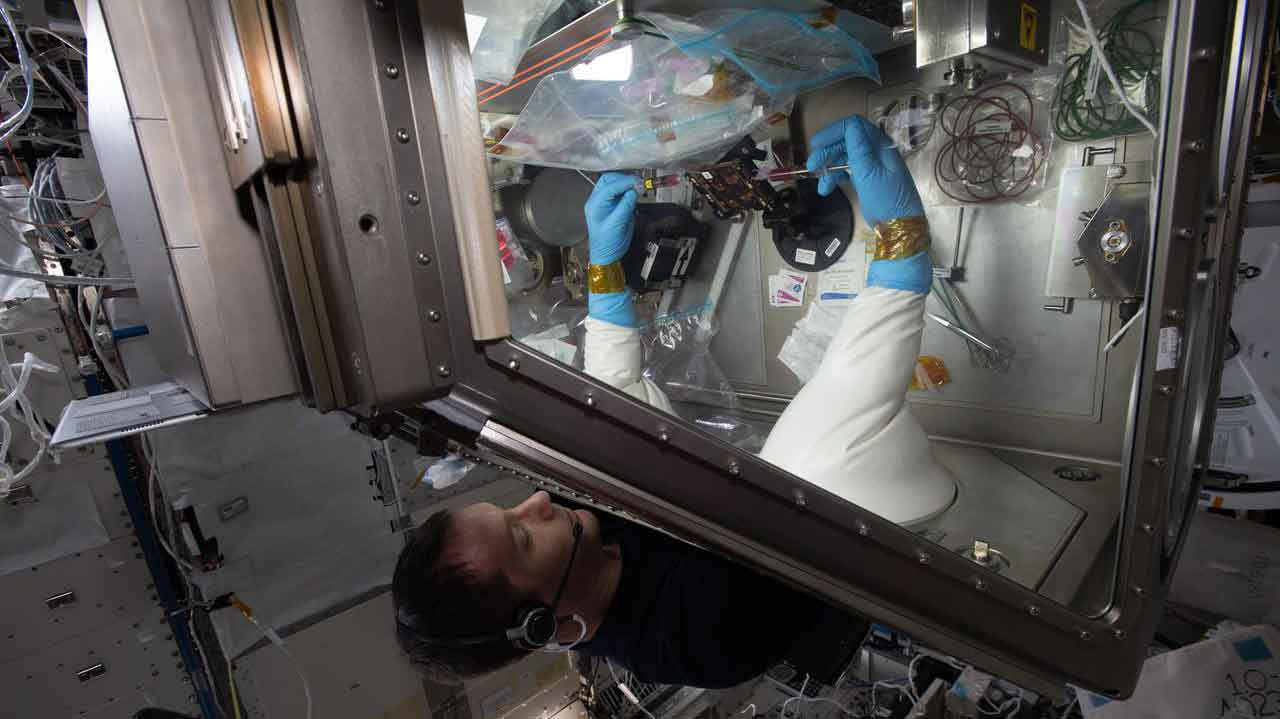Results From ISS National Lab-Sponsored Research Published in Peer-Reviewed Journals

ESA astronaut and Expedition 65 Flight Engineer Thomas Pesquet works in the Life Sciences Glovebox aboard the ISS.
Media Credit: NASA
July 21, 2025
Recently, findings from ISS National Laboratory®-sponsored research were published in three peer-reviewed journals—including one top-tier journal. These publications underscore the value of space-based R&D in advancing science and improving life on Earth.
Arizona State University researcher Paul Westerhoff and his team published results in the top-tier journal Environmental Science & Technology that could help improve water treatment methods that use UV light. When exposed to UV light, organic matter in water produces chemicals that help break down pollutants. Westerhoff and his team developed a new method to measure these chemicals and found that certain types of UV light increase the amount of chemicals produced. These findings could lead to the development of more efficient water treatment processes.
Redwire Space Chief Scientist Ken Savin and Columbia University researcher Max Wang published a comprehensive article in npj Microgravity on the scientific and economic impacts of ISS research. The paper highlights the rapid acceleration of research on the space station—particularly since 2012, when the Center for the Advancement of Science in Space® began managing the ISS National Lab. The paper analyzed publications and patents from researchers that conducted research on the ISS. The authors found that the outcomes from the space-based research were “significantly more impactful” than the outcomes of similar research done by the same researchers on Earth. The paper also explores how private-sector companies are increasingly leveraging the orbiting platform to develop new products and therapeutics, validate technologies, and test business models in low Earth orbit.
University of Florida researcher Siobhan Malany—a longtime ISS National Lab user—and her team published results in Stem Cell Reports that could lead to new treatments for age-related muscle loss. The loss of muscle from aging is hard to study because it happens slowly over decades. But in microgravity, muscles deteriorate much faster. Malany and her team developed a tissue chip system that contains bundles of skeletal muscle. Using the tissue chips, the team found that muscle loss in space mimics aspects of muscle aging on the ground. These results confirm that tissue chips in space are a valuable new tool to study age-related muscle loss and test new potential therapeutics.
The ISS National Lab is proud to support research that not only advances scientific understanding but also delivers meaningful benefits to humanity. These publications are a testament to the power of space-based science to drive innovation across disciplines.
Stay tuned for more updates from our research community as we continue to unlock the potential of low Earth orbit.